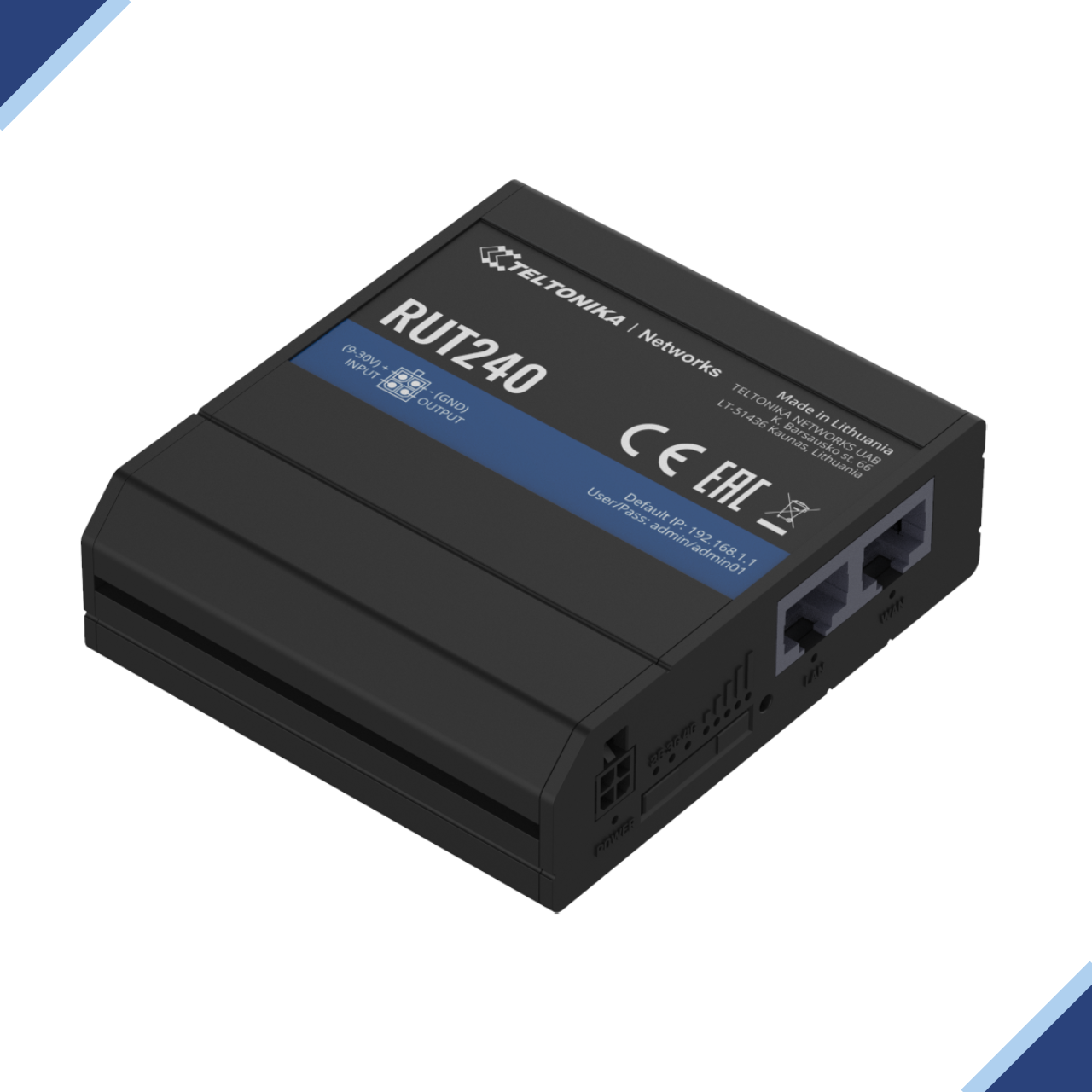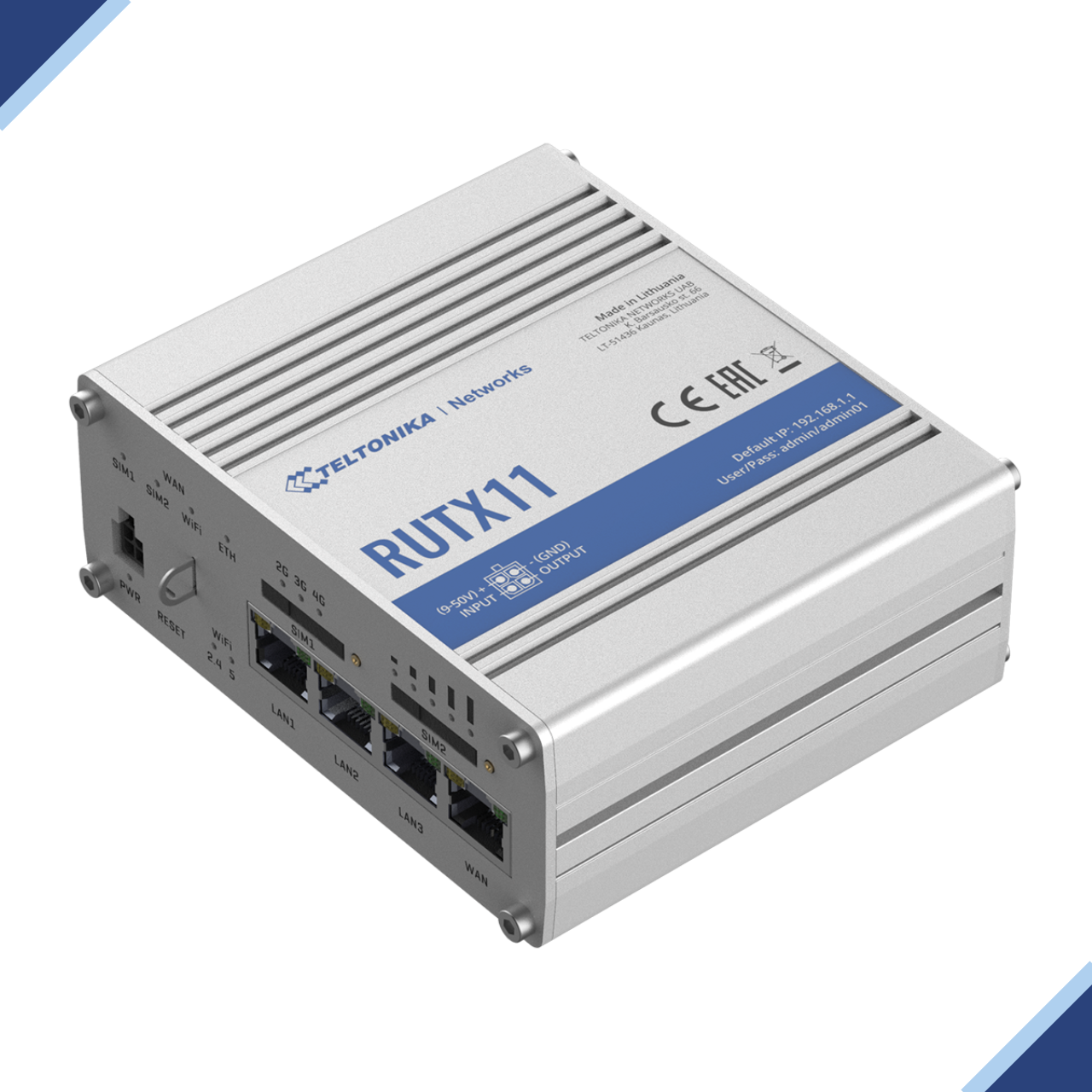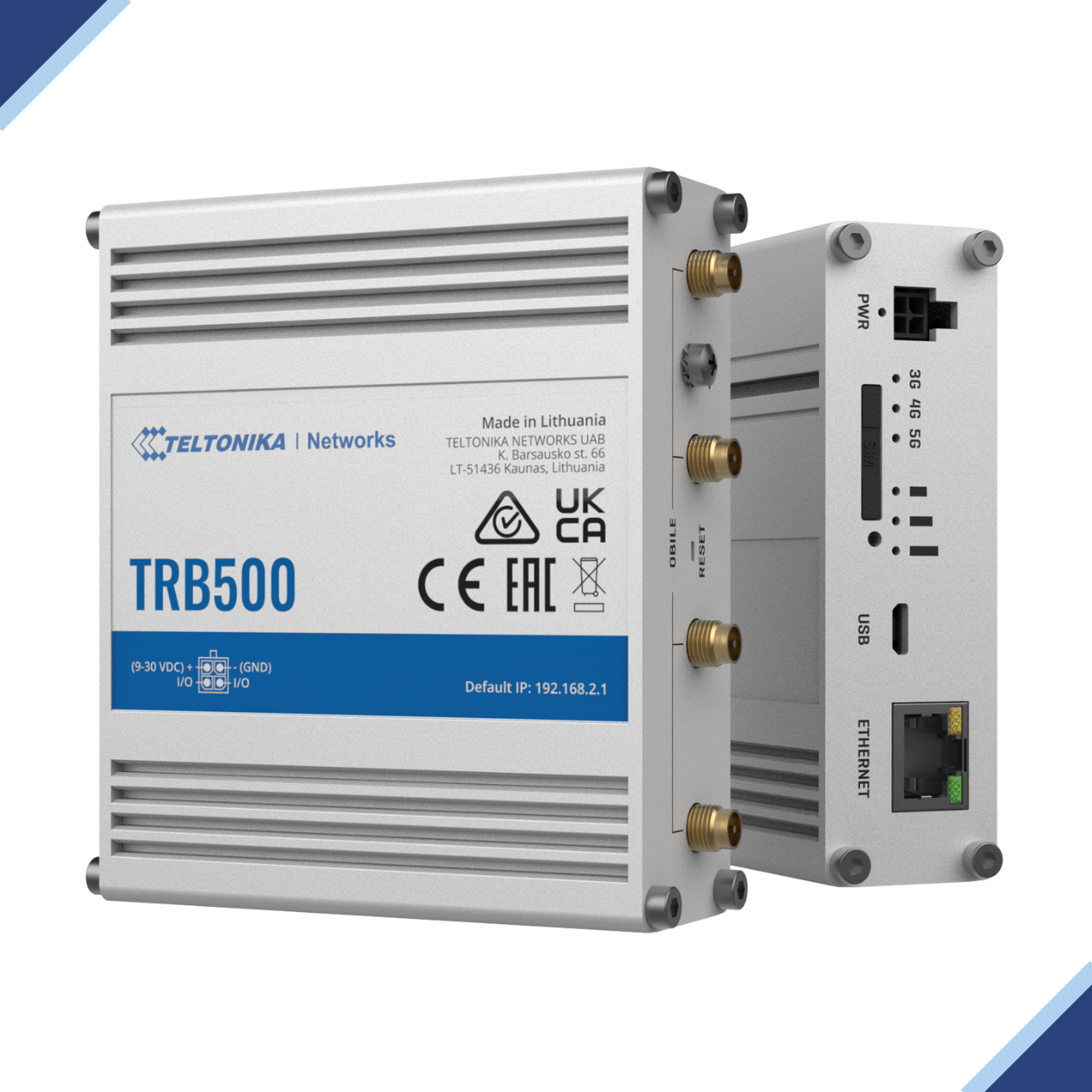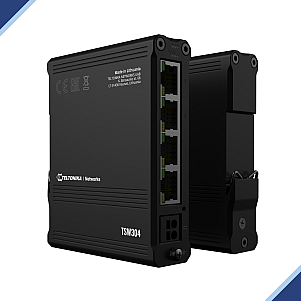Teltonika Networks Switch
Model: TSW010
If you are looking for a simple, reliable, and affordable way to connect multiple Ethernet devices in your industrial network, look no further than the Teltonika TSW010. This is a compact and unmanaged Ethernet switch that can be easily mounted on a DIN rail or a wall. It has five 10/100 Mbps Ethern..
€26.00
Ex Tax:€21.14
Model: TSW114
To be added later...
€44.00
Ex Tax:€35.77
Model: TSW110
Boost your network performance with a rugged and reliable industrial network switch.
Teltonika TSW110 is an unmanaged Layer 2 switch that enables industrial high-bandwidth applications with a simple and cost-effective solution.
It’s a versatile switch that can handle any network challenge. Whether..
€48.00
Ex Tax:€39.02
Model: TSW101
Teltonika TSW101: Five Gigabit Ethernet Port Switch - 4x PoE+ Ports with 802.3af and 802.3at Support
Power up your network with a simple and reliable switch. Meet the Teltonika TSW101! It’s an unmanaged Layer 2 switch that offers Five (5) Gigabit Ethernet ports with PoE+ support to connect and power multiple devices in your vehicle or industrial application.
The easy and economical solution for you..
€69.00
Ex Tax:€56.10
Model: TSW100
The Best Unmanaged Gigabit Ethernet Switch with PoE is the Teltonika TSW100. Are you seeking for an easy, affordable, and dependable way to connect and power your network devices? Look no further than Teltonika Networks’ TSW100 Gigabit Ethernet switch. For a variety of applications, this unmanaged s..
€72.00
Ex Tax:€58.54
Model: TSW304
Are you looking for a reliable and versatile switch that can handle multiple devices and applications in harsh environments? If so, you need the Teltonika TSW 304, a rugged industrial switch that offers high performance and durability.
The Teltonika TSW304 is designed for the most demanding industri..
€73.00
Ex Tax:€59.35



























